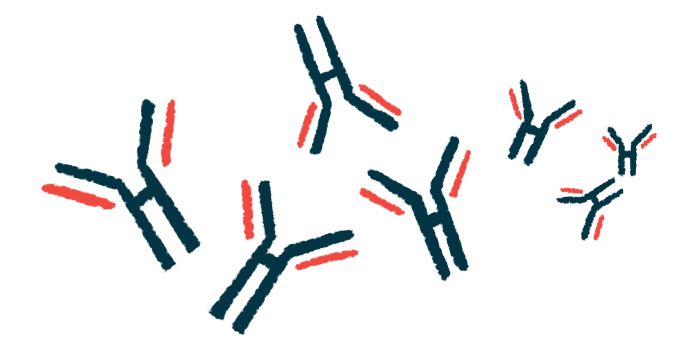ANCA test may help tell MPA from GPA, study shows
Looking for specific antibodies could enable earlier diagnosis

Testing for the presence of specific self-reactive antibodies linked to ANCA-associated vasculitis (AAV) may help doctors more easily tell microscopic polyangiitis (MPA) from granulomatosis with polyangiitis (GPA), the two most common types of AAV, a study showed.
Classifying patients as MPA or GPA based on the different types of antibodies, called ANCAs, showed a substantial agreement with current classification systems. ANCA specificity was less critical for EGPA, the rarest AAV type.
“ANCA specificity serves as a valuable adjunct in the classification of AAV, particularly for distinguishing between MPA and GPA,” the researchers wrote. “Adopting this approach can streamline the classification process, reduce invasive procedures, and enable earlier diagnosis, while maintaining high concordance with established systems.”
The study, “Simplifying ANCA-associated vasculitis classification with ANCA specificity: a retrospective analysis,” was published in Clinical Rheumatology.
AAV is a group of rare conditions marked by inflammation and damage in small blood vessels that most commonly leads to symptoms affecting the lungs, kidneys, and ear, nose, and throat (ENT). Most cases are caused by self-reactive antibodies called ANCAs that usually target myeloperoxidase (MPO) or proteinase 3 (PR3), two proteins found in immune cells called neutrophils.
Different profiles, different prognoses
ANCAs against MPO are more common in MPA patients, while anti-PR3 ANCAs are more frequently detected in those with GPA. “This … distinction aligns with differing clinical [profiles] and prognoses, suggesting that ANCA specificity could serve as a valuable tool for simplifying AAV classification while maintaining diagnostic accuracy,” the researchers wrote.
EGPA, the rarest AAV type, results in a more unique clinical profile, with 40% or fewer of EGPA patients testing positive for ANCAs, most commonly against MPO.
“This suggests that while ANCA specificity may enhance the classification of GPA and MPA, a different approach might be necessary for EGPA to ensure comprehensive patient assessment,” the researchers wrote.
The team of researchers in China retrospectively reviewed the medical records of 310 people diagnosed with AAV, at a mean age of 60.7, between January 2015 and December 2023 at three hospitals connected to Peking University in China.
More than half (53.2%) were female, and most had moderate to high disease activity. Some 62.3% of patients had general symptoms, more than half had lung (58.4%) or kidney problems (53.5%), and 40% had ENT manifestations.
In addition to ANCA testing, the researchers classified the patients based on two traditional systems: the European Medicines Agency (EMA) algorithm and the 2022 American College of Rheumatology/European Alliance of Associations for Rheumatology (ACR/EULAR) criteria.
About two-thirds (66.8%) tested positive for anti-MPO ANCAs and 55 (17.7%) for anti-PR3 ANCAs. A small proportion (5.2%) tested positive for both, while 10.3% tested negative for ANCAs.
Using the EMA algorithm, 48.1% of patients were classified as having GPA, 33.5% as MPA, and 7.7% as EGPA. 2022 ACR/EULAR criteria classified 60.3% as MPA, 22.9% as GPA, and 6.1% as EFPA; 3.5% fulfilled criteria of more than one type. Up to 10% of patients remained unclassified based on each of the traditional systems.
The team compared how well these classification methods matched each other to show how much agreement there was between them.
Classification using ANCA testing results closely matched classification based on 2022 ACR/EULAR criteria. There was “almost perfect agreement” for MPA, “substantial agreement” for GPA, and “fair agreement” for EGPA, the researchers wrote.
A large proportion of patients initially classified as having GPA under the EMA algorithm were reclassified as having MPA based not only on ANCA testing, but also the 2022 ACR/EULAR criteria.
“The EMA algorithm showed lower agreement levels with both the 2022 ACR/EULAR criteria and the ANCA specificity-based classification,” the team wrote.
EGPA classification showed the highest level of agreement between the traditional systems, “suggesting that ANCA specificity is less critical for EGPA diagnosis,” the researchers wrote.
The findings support the incorporation of ANCA specificity into AAV classification process, particularly for MPA and GPA, the team said. ANCA specificity “has been associated with differences in disease course and response to treatment, suggesting that an ANCA-based classification might inform prognostic assessments and therapeutic decisions,” the researchers wrote.
They noted, however, that “it is important to recognize that ANCA testing should complement, rather than replace, comprehensive clinical evaluation,” as “reliance on [ANCA specificity] alone may overlook atypical presentations or ANCA-negative cases.”
“For EGPA, traditional classification criteria remain effective, highlighting the need for a nuanced approach that considers both [blood] and clinical factors,” the researchers concluded.







